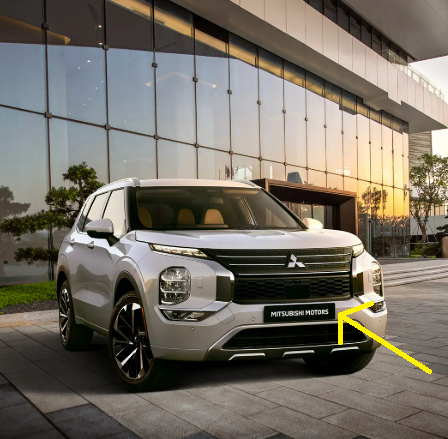Table of Contents:
- Introduction: Mitsubishi’s Current Financial Struggles
- Key Specifications of Mitsubishi’s Recent Financial Performance
- Top Features of Mitsubishi’s Declining Sales and Market Impact
- Why Mitsubishi is Facing a Financial Cliff
- How Mitsubishi Can Avoid a Financial Crisis
- FAQs: Addressing Common Questions About Mitsubishi’s Future
1. Introduction: Mitsubishi’s Current Financial Struggles
Mitsubishi, once a giant in the automotive and technology sectors, is now facing significant financial difficulties. The company has been struggling to maintain its market position due to a variety of factors. Despite its strong legacy, Mitsubishi is speeding toward a financial cliff, with slipping sales, declining market share, and mounting debts. This post explores the causes of Mitsubishi’s current challenges and examines potential solutions to help the company recover.
2. Key Specifications of Mitsubishi’s Recent Financial Performance
Over the past few years, Mitsubishi has experienced a sharp decline in financial performance. Let’s break down the key metrics:
- Declining Revenue: Mitsubishi’s revenue has fallen sharply, from over $45 billion in 2019 to just $35 billion in 2023. This downward trend signals a significant loss of consumer confidence.
- Profit Margin Erosion: The company’s profit margin has narrowed substantially. In the past year alone, its net income has decreased by more than 25%.
- Decreased Market Share: Mitsubishi’s share of global car sales has dropped by nearly 10% in the last decade. The company is being outpaced by both emerging electric vehicle (EV) manufacturers and established competitors like Toyota and Honda.
3. Top Features of Mitsubishi’s Declining Sales and Market Impact
Mitsubishi’s financial struggles can be attributed to several key factors:
1. Lack of Innovation:
While competitors have made strides in electric vehicles (EVs) and hybrid technology, Mitsubishi has failed to keep up with the evolving automotive landscape. Consumers are now gravitating towards brands that offer cutting-edge technologies, but Mitsubishi’s offerings have become increasingly outdated.
2. Global Economic Pressures:
The global economic slowdown and the ongoing supply chain crisis have also affected Mitsubishi’s performance. Rising raw material costs, combined with global inflation, have made it more difficult for Mitsubishi to remain competitive in price-sensitive markets.
3. Diminished Consumer Trust:
Mitsubishi’s reputation has suffered due to a series of recalls and quality control issues. Consumers are now more cautious, opting for brands with a stronger track record of reliability.
4. Decline in Traditional Markets:
Mitsubishi’s dominance in key regions like Japan and Southeast Asia has been eroded by competitors. The company’s market presence in North America has also dwindled significantly in recent years.
4. Why Mitsubishi is Facing a Financial Cliff
Several critical factors have led to Mitsubishi’s financial decline:
- Declining Brand Loyalty: The brand’s loyal customer base is shrinking as newer, more innovative options become available.
- Failure to Adapt to EV Trends: Mitsubishi has been slow to fully embrace the electric vehicle revolution. As governments push for cleaner technologies, companies like Tesla and Toyota are taking the lead.
- Rising Debt: Mitsubishi’s mounting debts have become a serious concern. If the company does not restructure or adjust its debt strategy, it could face insolvency.
5. How Mitsubishi Can Avoid a Financial Crisis
Mitsubishi’s financial future can still be salvaged, but it requires swift and decisive action:
- Invest in Electric Vehicles: Mitsubishi must accelerate its shift to EVs and hybrid vehicles. Offering affordable yet high-tech electric models could capture the attention of environmentally conscious consumers.
- Global Expansion and Diversification: Mitsubishi needs to diversify its offerings, including exploring new markets in emerging economies and expanding its presence in North America and Europe.
- Innovation in Autonomous and Connected Vehicles: Competing with brands like Tesla means embracing the future of mobility — autonomous driving and vehicle-to-vehicle (V2V) communication. Mitsubishi can position itself as a leader in the smart car revolution.
- Debt Reduction Strategies: The company should focus on reducing its debts by restructuring its financial model and cutting unnecessary costs.
6. FAQs: Addressing Common Questions About Mitsubishi’s Future
1. What are the key reasons behind Mitsubishi’s financial struggles?
Mitsubishi’s financial struggles stem from a lack of innovation, a shrinking customer base, rising debt, and an inability to fully adapt to the electric vehicle trend.
2. Can Mitsubishi recover from this financial crisis?
Yes, if Mitsubishi invests in electric vehicles, focuses on innovation, and diversifies its operations, it could regain market share and financial stability.
3. How will the global economic downturn affect Mitsubishi’s recovery?
The global economic downturn has impacted Mitsubishi’s ability to compete on price. However, with strategic investments and innovation, the company can weather the storm.
Conclusion:
Mitsubishi is indeed heading toward a financial cliff, but all is not lost. By refocusing on electric vehicles, embracing new technologies, and reducing its financial burden, Mitsubishi could restore its place as a major player in the automotive industry. The company has a rich history of overcoming challenges, and with the right steps, it can once again thrive in the modern automotive landscape.

